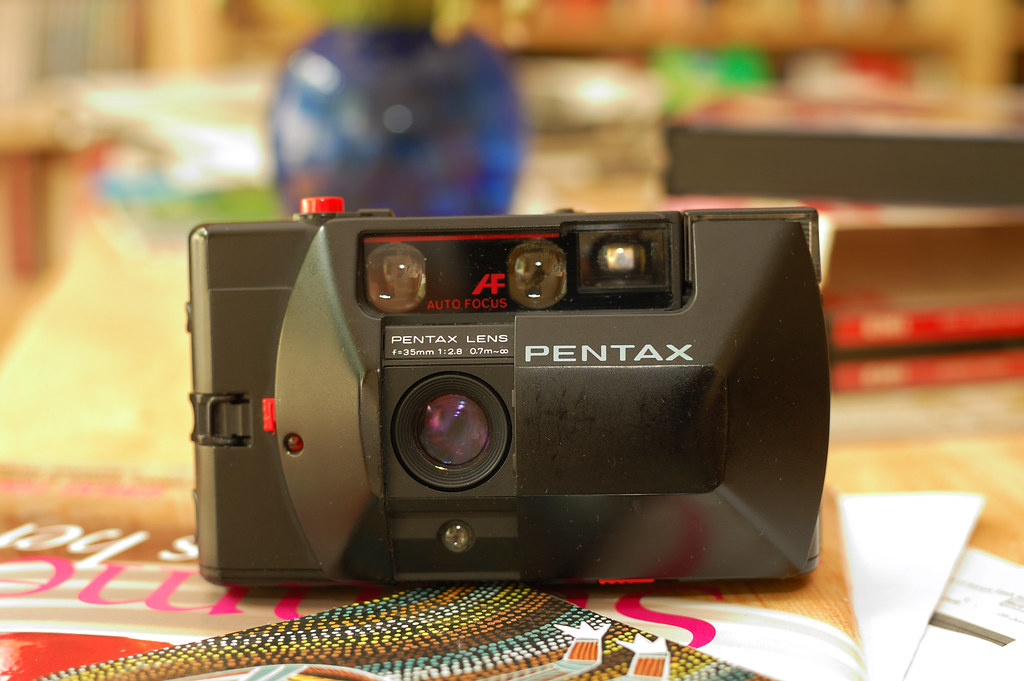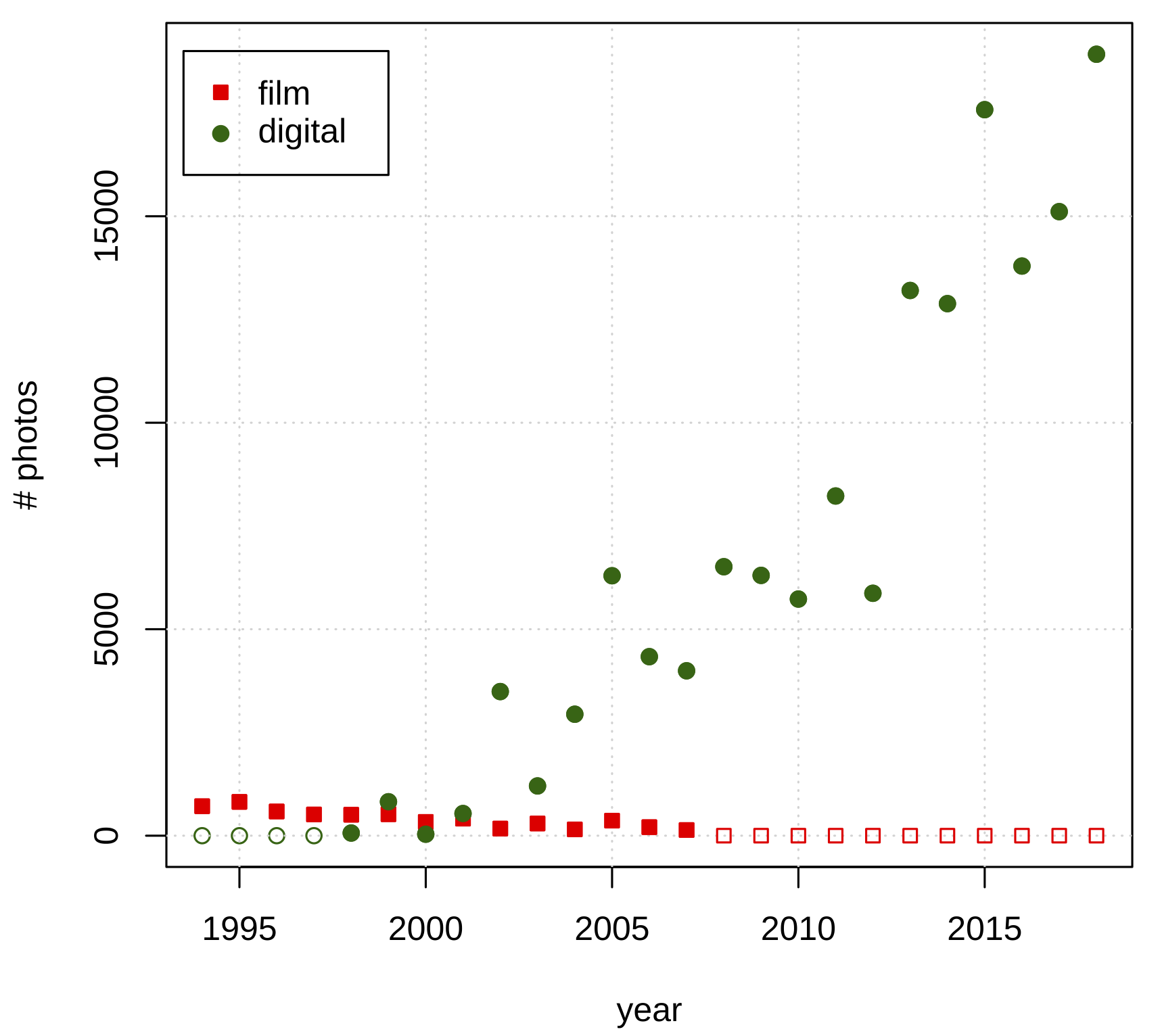RECENT ARTICLES
- CEBRA: An optimised and standardised sampling protocol for BioBlitz
- Stop it people, the plural of anecdote IS data!
- That's no pollinator, that's a flower visitor
- Add a scale to your macro photos
- What to photograph when counting the wild
- Imagine counting the wild on EVERY street in a city!
- My wild counting workflow
- A butterfly flew through
- Why iNaturalist observations without photos can be research grade
- Why you shouldn’t use a spreadsheet for data entry
- All articles ...
A digital immigrant’s perspective on the digital photography revolution
Advances in photography in recent decades have been a revolution for wild counting.
written Jun 13, 2018 (last updated Oct 11, 2021) • by Jon Sullivan • Category: Wild Counting


In some ways, I’m grateful to have been born before personal computers, the internet, and digital photography. As a digital immigrant, I can marvel at the amazing foreignness of it all, in ways that digital natives cannot. In another article I’ll offer some hard won tips on using digital cameras and smartphones to photograph wild species. First, though, I’d like to take you on a personal journey through four decades of photographic history, to emphasise how how much the advances in photography have changed wild counting.
When it comes to photography, I’ve had first hand experience with the astounding progress. My parents bought me my first camera in Christmas 1984, when I was 13. It was a Pentax PC35AF compact film camera (the model pictured above). I loved it. That led me through a series of Pentax and then Nikon SLR cameras, with lenses and other accessories, plus a part-time job at a camera store while I was in high school and an undergrad at university (thanks to Bryan George of Pegasus Photographics in New Brighton).
All cameras were film cameras back then. You bought rolls of film with 24 or 36 exposures (photos), either for prints or slides, and then had to drop them at a photographic lab to get developed. It seems strange in hindsight, but it was normal back then. It was considered a breakthrough in convenience when print film could be processed in just one hour, but then you still needed to finish off a roll of film and then take it to the lab, before waiting one hour to see your photos.
How many photos I took was tightly constrained by the cost of each photo. By the mid-1990s, each photo I took with Kodachrome 64 slide film, using my Pentax KX camera, cost me about 50 cents in film and processing. Taking photos took a noticeable bite from my small graduate student income. Also, I wouldn’t know whether a photo had worked until a got the film processed at a camera shop, weeks to months after taking the photo.
That was all an unavoidable motivator for sharpening my photography skills. That included mastering the mental gymnastics of balancing aperture and shutter speed in each photo, skills which I still use daily. I won’t horrify you with the complexity of the manual exposures on my macro photographs with a non-TTL (Through The Lens) flash. I used to have a hand-written table of settings taped to the back of my flash unit. (Kids these days don’t know how lucky they are!)
My first digital camera was a Sony Mavica MVC-FD7, which stored its photos on floppy discs. I got a small grant from Sigma Xi in 1998 to buy it for my PhD research. A floppy disc camera sounds antiquated now, and the photo resolution was awful (640 by 480 pixels), but it was completely revolutionary for me. Until then, I used my film SLR for the exceptional photos, and I drew everything else in my field notebooks. Yes, until digital photography, drawings were my digital photos.

With the Mavica, finally, photography became my nature notes, and I could take a lot more photo notes than I had time to draw. My field notebooks contained drawings of species, life stages, behaviours, and interactions, that were new to me or of special interest. With digital photography, I could still do that, but also more. The bar for what was interesting enough to photograph digitally was much lower than the bar for making a drawing, because photos are much quicker than drawings.

At that time, I was still very much limited by hard drive space. The hard drive on my first laptop, a mighty Apple PowerBook 520 from 1995, was 160 MB. Yes, 160 MB, not GB nor TB. For more storage, I had a Zip drive with 100 MB Zip cartridges. In 1998 I upgraded to a Powerbook 3400c, with a 2 GB hard drive, which was a big jump. As hard drive capacity steadily increased, digital photography gradually moved onto centre stage as my primary tool for documenting nature.
Fast forward to now and my Nikon D800, which is fantastic, takes as many photos as I want, for free(!), and at higher quality (36 MP) than I ever got with a professional 35 mm slide film. I can even control the ISO per photo. I can also make high resolution movies and stack photos of different exposures together into HDR images. Just five RAW photos from my D800 would have completely filled the hard drive of my Apple PowerBook 520 from 20 years earlier. And, if that wasn’t amazing enough, the iPhone SE in my pocket can also take remarkably good photos for its size, and I carry it everywhere.

The amount of progress in photography that’s happened in the past 30 years is astonishing. The combination of affordable and high quality digital photography, plus affordable large capacity storage, on computers and now in the cloud, plus online photo sharing websites, is unquestionably a revolution. If I’d taken as many photos in 1998 as I took in 2018, but with slide film, that would have cost more than 65% of my annual PhD student income (before tax). Understandably, I preferred to spend my money on food and accommodation.
Now, there are no obstacles to photographing anything, or everything, that I find. Being able to record and recall so much more of what I find has made me see the natural world differently, in much more detail.
Photography has become a powerful tool for documenting the details of nature’s changes. What’s now needed is many more people interested enough to take and share their geotagged photos of wild species and places, using sites like iNaturalist, and to add more consistency in how and when those photos are taken.